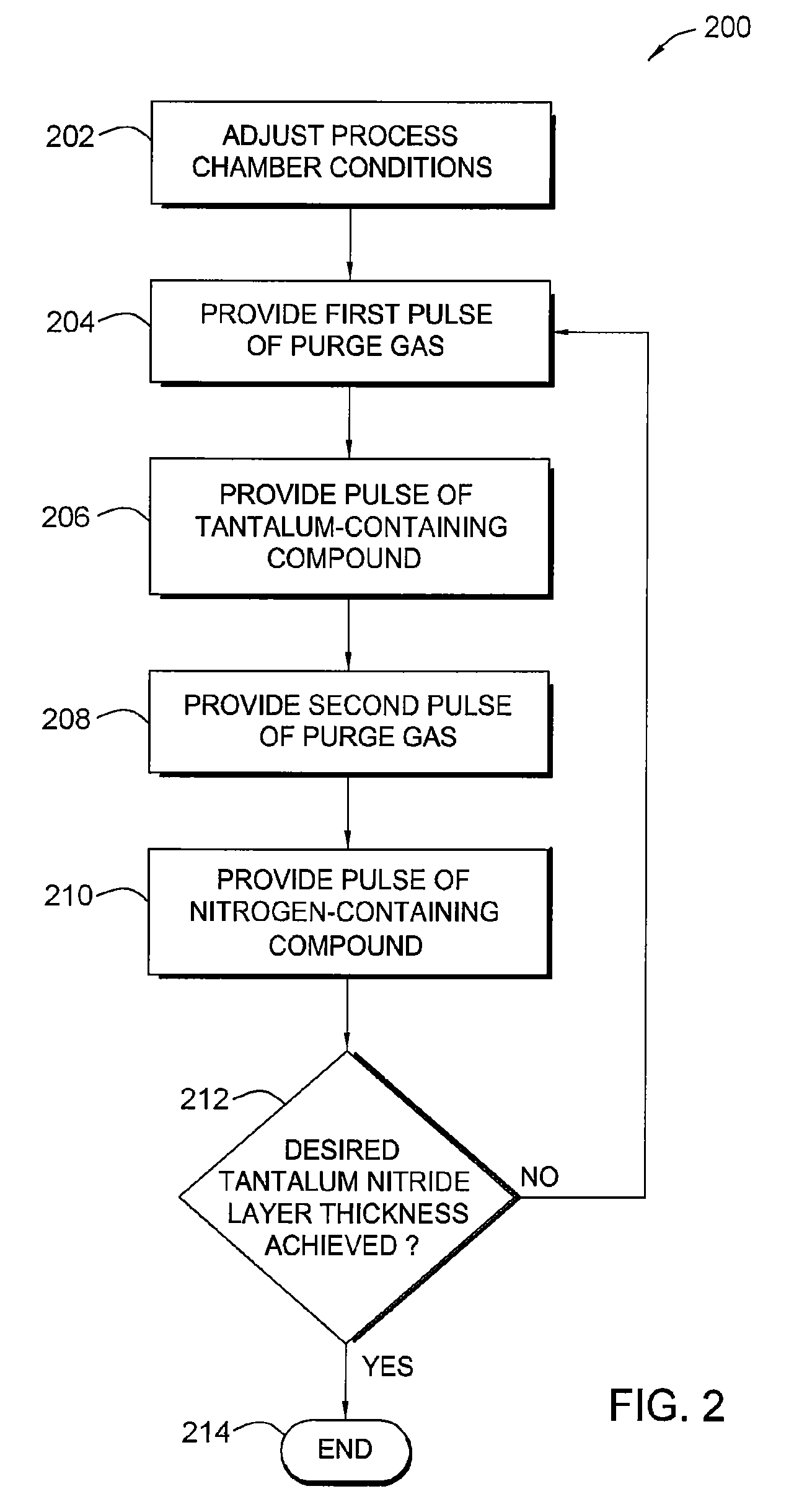In-situ chamber treatment and deposition process
a deposition process and in-situ chamber technology, applied in the direction of chemical vapor deposition coating, liquid surface applicator, coating, etc., can solve the problems of non-uniformity performance after multiple runs are completed in the same ald processing chamber, may have reached the limit of pvd process size and aspect ratio, lack of stability of deposition rate, etc., to achieve the effect of decreasing non-uniformity and increasing uniformity
- Summary
- Abstract
- Description
- Claims
- Application Information
AI Technical Summary
Benefits of technology
Problems solved by technology
Method used
Image
Examples
Embodiment Construction
[0021]Embodiments of the invention provide a method for treating the inner surfaces of a processing chamber in situ and depositing a material on a substrate within the processing chamber during a vapor deposition process. The substrate may be sequentially or simultaneously exposed to a first precursor and a second precursor gas during the vapor deposition process, such as atomic layer deposition (ALD) or by chemical vapor deposition (CVD). In one embodiment, the inner surfaces of the processing chamber and the substrate may be exposed to a treatment gas containing a reagent, such as a hydrogenated ligand compound during a pretreatment process. The hydrogenated ligand compound may be the same ligand as a free ligand formed from the metal-organic precursor used during the subsequent vapor deposition process. The free ligand is usually formed by hydrogenation or thermolysis during the deposition process. In one example, the processing chamber and substrate are exposed to an alkylamine ...
PUM
| Property | Measurement | Unit |
|---|---|---|
| temperature | aaaaa | aaaaa |
| time | aaaaa | aaaaa |
| temperature | aaaaa | aaaaa |
Abstract
Description
Claims
Application Information
 Login to View More
Login to View More - R&D
- Intellectual Property
- Life Sciences
- Materials
- Tech Scout
- Unparalleled Data Quality
- Higher Quality Content
- 60% Fewer Hallucinations
Browse by: Latest US Patents, China's latest patents, Technical Efficacy Thesaurus, Application Domain, Technology Topic, Popular Technical Reports.
© 2025 PatSnap. All rights reserved.Legal|Privacy policy|Modern Slavery Act Transparency Statement|Sitemap|About US| Contact US: help@patsnap.com



